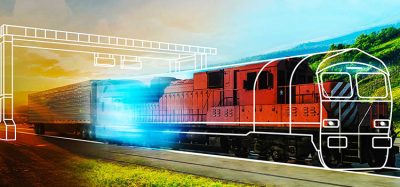Keeping Europe’s railways rolling
Posted: 31 May 2011 | | No comments yet
EURAXLES is a three-year EU/industry research programme lead by UNIFE which aims to reduce the risk of axle failure to a level where it is no longer a significant threat to safe operation. The project unites 23 partners across Europe including six axle manufacturers, four railway operators/IMs, two system integrators, three technology suppliers, five universities, two rail sector associations and one consulting firm.
There are 3.5 million axles in service across the railways of Europe, but as yet there is no common approach to their design, maintenance and servicing. The management of wheelsets throughout their life cycle has traditionally been overseen by railway operators, combining their own experience with design and production expertise shared by the manufacturers.
EURAXLES is a three-year EU/industry research programme lead by UNIFE which aims to reduce the risk of axle failure to a level where it is no longer a significant threat to safe operation. The project unites 23 partners across Europe including six axle manufacturers, four railway operators/IMs, two system integrators, three technology suppliers, five universities, two rail sector associations and one consulting firm. There are 3.5 million axles in service across the railways of Europe, but as yet there is no common approach to their design, maintenance and servicing. The management of wheelsets throughout their life cycle has traditionally been overseen by railway operators, combining their own experience with design and production expertise shared by the manufacturers.
EURAXLES is a three-year EU/industry research programme lead by UNIFE which aims to reduce the risk of axle failure to a level where it is no longer a significant threat to safe operation. The project unites 23 partners across Europe including six axle manufacturers, four railway operators/IMs, two system integrators, three technology suppliers, five universities, two rail sector associations and one consulting firm.
There are 3.5 million axles in service across the railways of Europe, but as yet there is no common approach to their design, maintenance and servicing. The management of wheelsets throughout their life cycle has traditionally been overseen by railway operators, combining their own experience with design and production expertise shared by the manufacturers.
National design, maintenance and inspection standards have been developed based on this cumulative knowledge, but they have come to incorporate many experiencebased assumptions. While this has brought a high level of reliability, it means that maintenance procedures are performed in different ways in different countries, impacting on interoperability.
As Europe moves towards a single railway market, more-andmore vehicles are travelling across borders, using different infrastructure managers and moving in the trains of many separate operators, So the old order is breaking down, and we need to find an innovative global approach which will improve the management of wheelset life and decrease the risk of axle failures.
This need for a common European approach to design, maintenance and inspection led to the EURAXLES research project, which is being funded under the EU’s seventh framework programme and was officially launched in Brussels in November 2010. The EURAXLES project consortium brings together 23 key stakeholders including manufacturers, operators, suppliers and academics who share a strong desire to promote rail as the safest and most economically competitive land transport mode.
There are many inter-dependent parameters involved in wheelset life, and any changes could jeopardise overall system stability. As a result, manufacturers are reluctant to propose changes, even where there are potential benefits from new steels and coatings, while deregulation of the rail industry means that train operators may not possess the corporate technical knowledge or research and development capabilities of their own.
We believe that EURAXLES will not simply guarantee the current levels of safety, but will improve them, whilst at the same time increasing interoperability and reducing costs to maximise industry take-up.
Three ‘routes’
The EURAXLES research project is split into three complementary ‘routes’. These take into account the combined influence of design, production and maintenance standards, and recognise the need for safe management across the whole life cycle.
First project route
The first route will enable informed development of innovative axle designs which are based on risk analysis as well as previous experience. Research is being undertaken to improve the understanding of the loading applied to structures by freight and conventional passenger trains, enabling more accurate Finite Element Analysis modelling of complex structures such as powered axles with their many radius transitions.
Multi-axial fatigue criteria will be used to validate wheelset designs which make use of new grades of steel and anti-corrosion coatings, while probabilistic treatment of the data will allow a comparison between stresses and the strength of the structure, helping to determine the safety margin of the system as a whole.
Second project route
The second route will look at resolving the corrosion and damage problems associated with existing surface coating methods. Fatigue resistance depends on the condition of the axle surface, and can be undermined by paint adhesion problems, but we have not been able to find any previous or ongoing research or standardisation activities in this area.
In view of their experience, axle manu – facturers will analyse the current protective coating standards and determine the limitations of testing and validation. Particular attention will be given to real-world operating conditions, and alternative test methods will be proposed where necessary. EURAXLES will investigate improvements to coating adhesion and new treatment processes, while keeping in mind service conditions and environmental requirements such as the need to avoid or severely limit the emissions of volatile organic compounds.
Third project route
In the third route, EURAXLES will look at improving ultrasonic techniques for inspecting structural integrity to reduce the risk of human error, increase precision and optimise inspection frequency. Promising new nondestructive testing techniques which might allow accurate inspection of corrosion without taking the vehicle out of service will also be investigated.
We believe that the EURAXLES project will not only bring benefits in terms of increased wheelset safety for freight and passenger operators, but it should also ensure lower costs and greater economic efficiency. As part of the project, we will be undertaking RAMS and LCC analyses to enable optimisation of costs and benefits with the aim of maximising market uptake.
About the Author
On 1 February 2009, Dr. Raimund Abele joined GHHValdunes’ management team, taking up the role of Executive Vice-President for original equipment sales, business development and engineering. A key objective of his new function is to further develop the international activities of the group. Before joining GHH-Valdunes, Dr. Abele was in charge of the rail bearings product line for the manufacturer Schaeffler Group (FAG). He successfully positioned FAG as one of the leading brands for rolling bearings worldwide. As Vice-President of the Verband der Bahnindustrie in Deutschland (VDB) during the past four years, Dr. Abele has also diligently represented the interests of the rail industry, supporting its international growth, especially in Eastern Europe and Asia.




